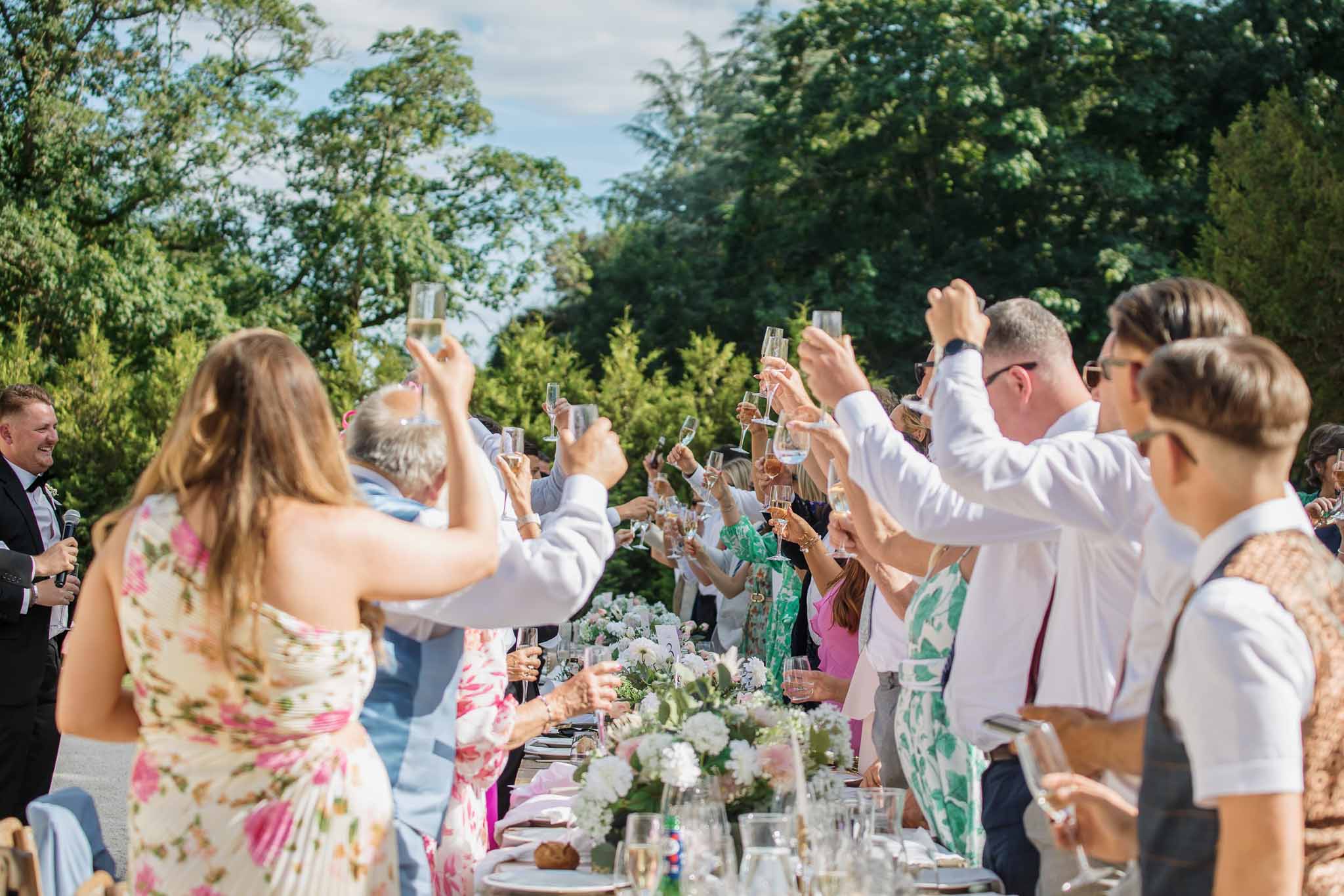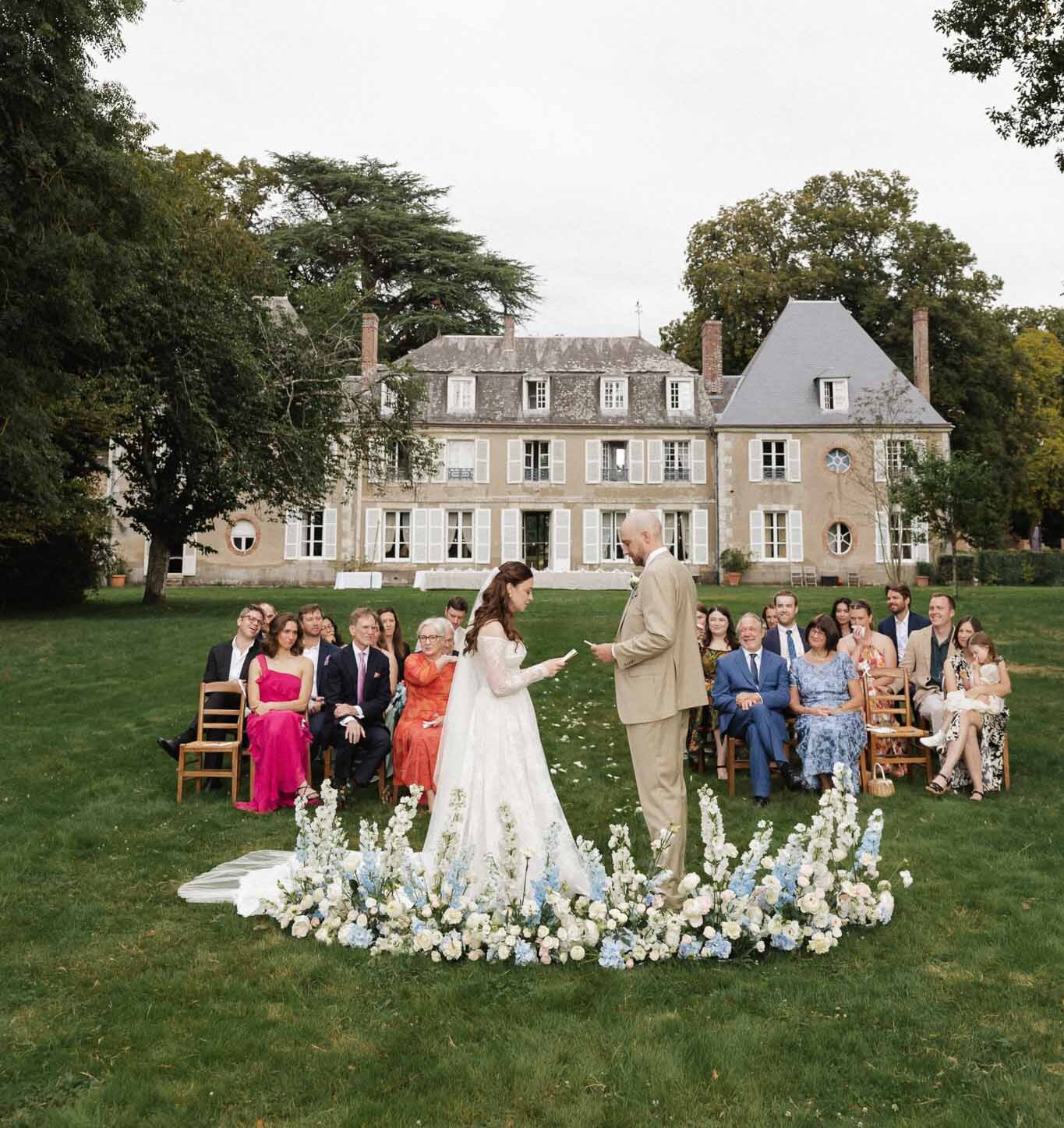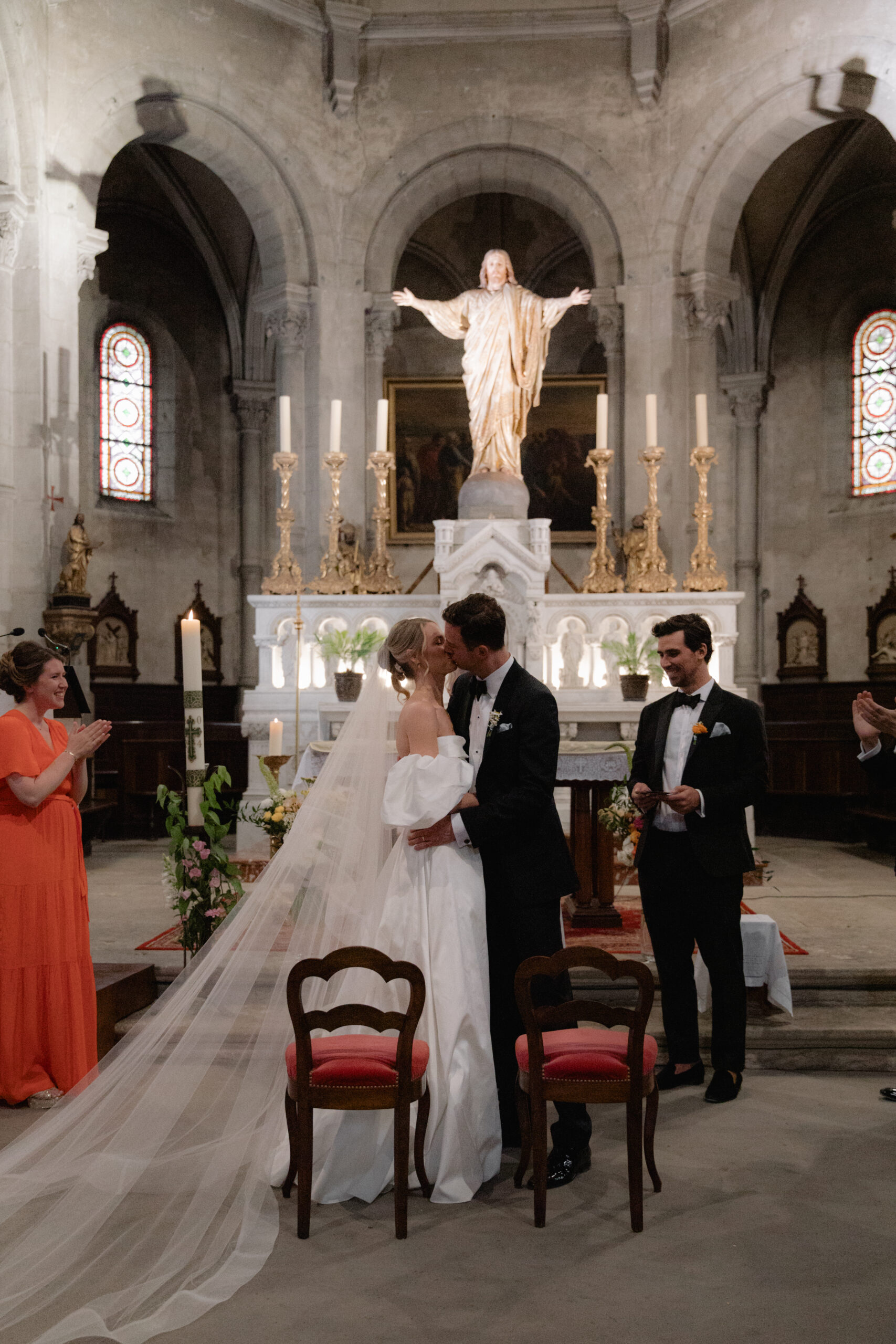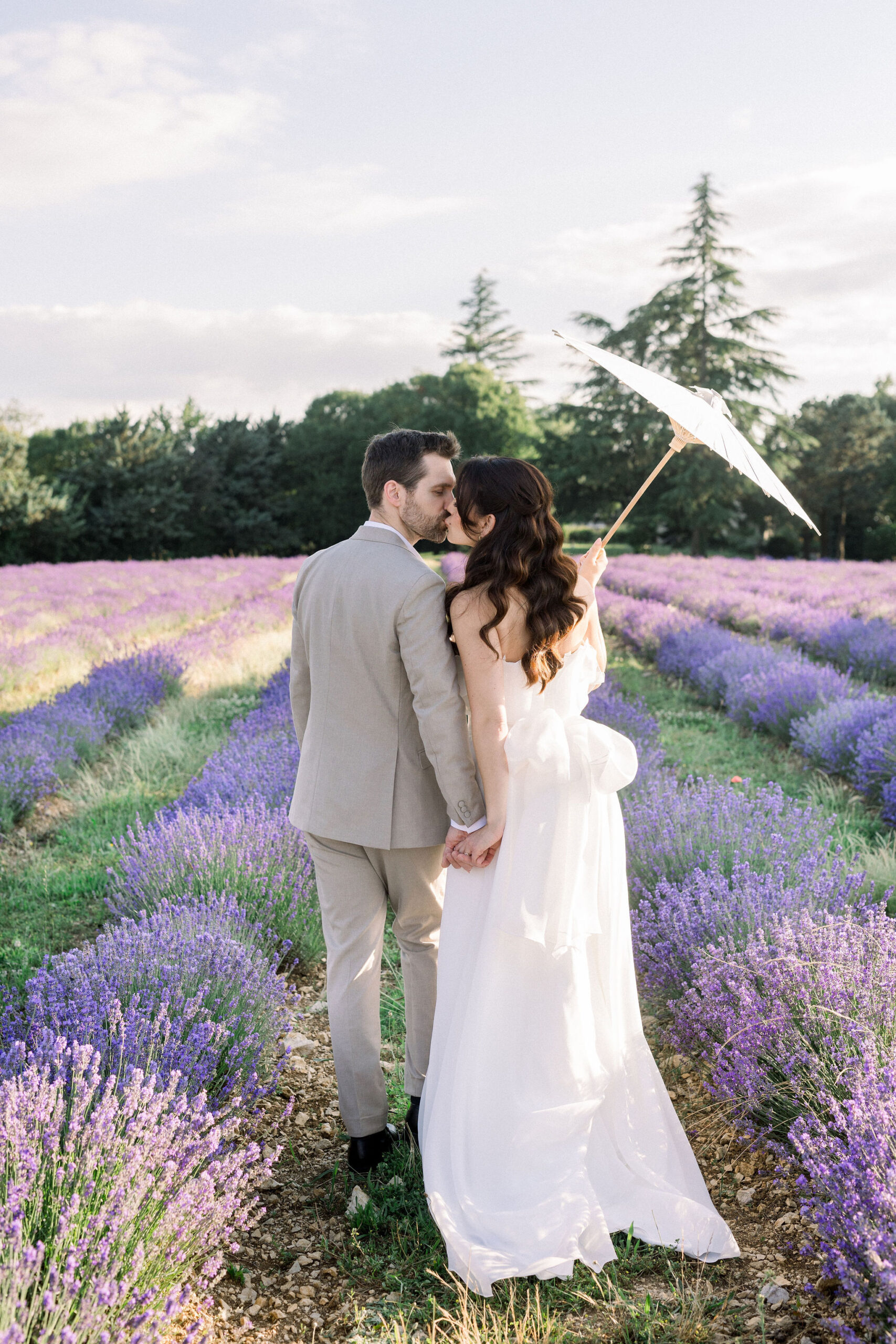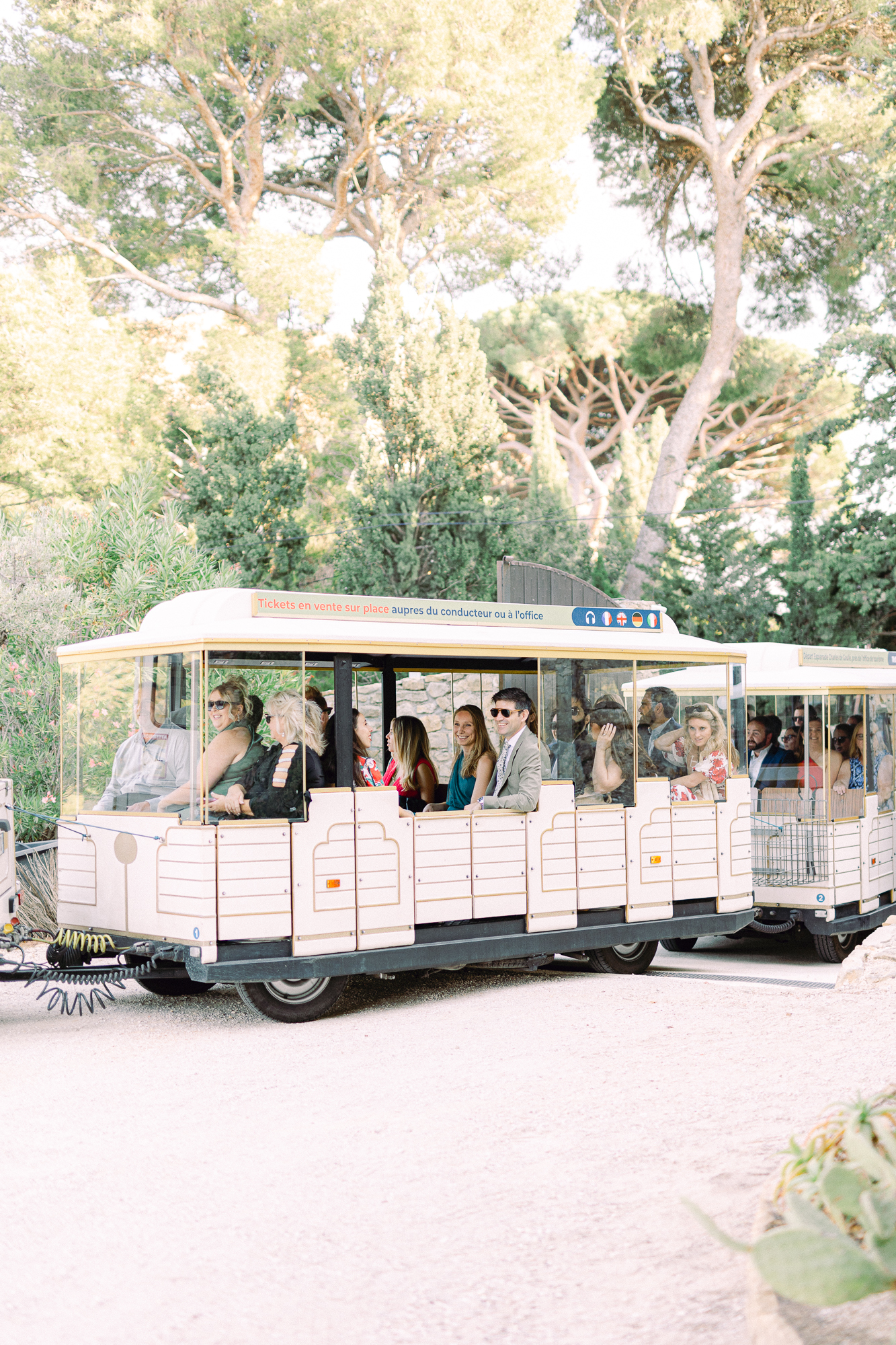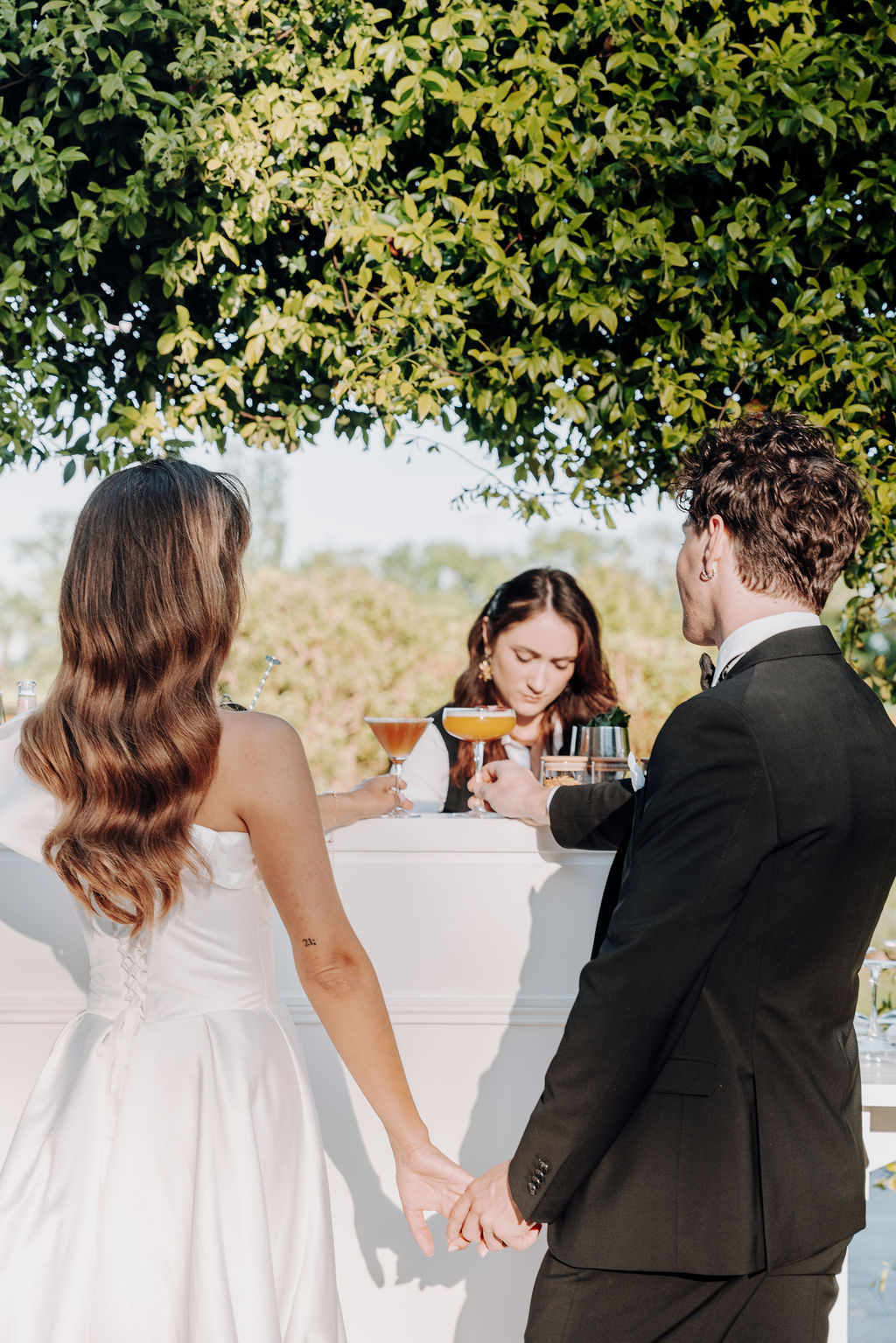A wedding timeline isn’t just about staying on track—it’s what helps your whole day flow beautifully. From those calm, cozy moments getting ready in the morning to that last dance when no one wants the night to end, the right schedule makes room for joy, connection, and all the little memories you’ll never forget. Here’s a real French wedding timeline, designed to match the relaxed, magical pace of a destination celebration in France.
Key Insights
- A timeline sets the tone: It keeps the day flowing smoothly and lets you stay relaxed and present.
- French weddings move at a natural pace: From a calm morning to dancing past midnight, the day unfolds gradually.
- The vin d’honneur is a key moment: A 1.5–2 hour cocktail hour allows for mingling and final couple portraits.
- Dinner is an experience: Expect four courses over 2–3 hours, with time for conversation and wine.
- Photos and toasts are well-timed: Golden hour portraits and speeches between courses keep the energy balanced.
- The party starts late: First dance and cake cutting begin around 9:00 p.m., followed by dancing into the night.
- A good timeline aligns vendors: Planners, caterers, and DJs rely on a clear schedule to keep things on track.
Complete French Wedding Day Schedule (With Reception Timing)
Morning Preparations
- 08:00 a.m. — Breakfast
A light and nutritious breakfast helps fuel the day ahead, setting a calm, steady pace before the whirlwind begins. - 09:00 a.m. — Planner Arrives
Your planner begins coordinating vendors, checking setups, and troubleshooting anything that might arise on-site. - 10:00 a.m. — Bride & Bridesmaids Get Together
This is the perfect window for relaxed conversation, sipping tea or bubbles, and starting the day with joy and connection. - 11:00 a.m. — Hair & Makeup Begin
Hair and makeup artists typically work in rotation, allowing everyone to ease into glam while photographers capture the candid energy. - 12:00 p.m. — Lunch
A light lunch keeps energy stable and ensures no one is getting dressed or saying vows on an empty stomach. - 01:30 p.m. — Couple Gets Dressed
With hair and makeup complete, it’s time for final touches and the emotional moment of slipping into the gown or suit.
Pre-Ceremony Photos & First Look
- 02:30 p.m. — Individual Portraits
These solo shots are quiet, introspective, and elegant — often taken with natural light before the pace of the day picks up. - 03:00 p.m. — First Look
A planned private moment for the couple to see each other, often resulting in emotional and intimate photos before the ceremony. - 03:30 p.m. — Bridal Party Photos
With everyone ready and glowing, group photos are taken ahead of time to free up cocktail hour later.
Guest Arrival & Ceremony
In France, wedding ceremonies often begin later in the day, just as the sun starts to mellow and the heat gives way to a soft, golden glow. Starting between 4:30 pm rather and 5 pm can be a sweet spot—it gives you a little extra time to ease into cocktails, savor dinner, and let the evening flow without feeling rushed.
- 04:00 p.m. — Guests Arrive
Early arrivals are greeted with a relaxed welcome, often with infused water or refreshments in summer settings. - 04:30 p.m. — Ceremony Starts
Most ceremonies last 30–45 minutes, with symbolic or secular rituals personalized to the couple’s story.
Reception Order of Events: A French Timeline Breakdown
Cocktail Hour / Vin d’Honneur (5:30 p.m. – 7:30 p.m.)
The vin d’honneur, a French pre-dinner tradition, is a chic garden or courtyard gathering with champagne, regional wines, and elegant canapés—perfect for mingling, light entertainment, and a few last portraits before dinner.
Dinner Begins (7:30 p.m.)
French wedding dinners are leisurely and elegant, typically served in four courses: starter, main, cheese, and dessert. Guests are seated by place cards, and the meal is paired with wine, soft music, and warm conversation under ambient lighting.
Golden Hour Photos (8:00 p.m.)
The couple steps away for 20–30 minutes during golden hour to capture romantic portraits in the best light of the day—often in the venue’s gardens, vineyard, or terrace—before returning for speeches or dancing.
Toasts & Speeches (8:30 p.m.)
Toasts by the Best Man, Maid of Honor, or parents are given between dinner courses, keeping the mood heartfelt and personal without interrupting the meal’s flow.
First Dance (9:00 p.m.)
The newlyweds share their first dance—choreographed or spontaneous—setting the tone for the evening, often under warm lights with guests gathered around the dance floor.
Cake Cutting (9:30 p.m.)
This sweet tradition may feature a classic cake or a French alternative like croquembouche, offered alongside coffee or digestifs to ease into the party.
Let the Party Begin! (10:00 p.m. – late)
The dance floor opens, and the DJ or live band gets the celebration going. Guests are encouraged to dance freely, with the party often lasting well past midnight.
How Long Should a Wedding Reception Last in France?
In France, wedding receptions are designed to be immersive, indulgent, and unhurried—offering a rich blend of food, music, and meaningful moments. Typically, the reception lasts around 6 to 7 hours from the start of the vin d’honneur (cocktail hour) to the final song on the dance floor.
- Dinner service tends to be longer than in many other countries, often lasting up to 2–3 hours due to the multiple-course format and the importance placed on conversation and ambiance.
- Dancing usually begins around 10:00 p.m. and can continue until into the early hours, depending on the venue and energy levels.
- Key timing factors include your venue’s curfew, local noise restrictions (especially in village or rural settings), and how long guests are likely to stay engaged.
For a truly memorable flow, plan your timeline with plenty of breathing room—and always double-check your venue’s policies on end time and music cutoff.
Tips for a Smooth Reception Timeline
How do you make sure your reception runs on time without feeling rigid? The key is thoughtful planning with enough flexibility to keep things relaxed. These tips will help your timeline feel seamless and enjoyable from start to finish:
- Work closely with your vendors: Planners, caterers, photographers, and DJs know what works best—they can guide the flow of events and adapt in real-time when needed.
- Build in breathing room: Add small buffers (10–15 minutes) between major moments to allow time for transitions, unexpected delays, or guests moving between spaces.
- Don’t overload the schedule: Prioritize what matters most to you, and space out speeches and formalities so the night stays lively and well-paced.
- Have a timeline captain: Assign someone—like your planner or MC—to keep everything on track, so you can stay present and fully enjoy the celebration.
Why a Wedding Reception Timeline Is Worth It
Your wedding day will go by faster than you think—moments will blur, laughter will echo, and before you know it, the last song will be playing. Having a clear and thoughtful reception timeline ensures that every important moment has space to happen without stress or confusion. It gives your vendors a roadmap, your guests a sense of ease, and you the freedom to truly be present. Whether you’re planning a formal château celebration in France or an intimate countryside soirée, a solid timeline isn’t just practical—it’s what helps transform a beautiful day into a stress-free, unforgettable experience.



